
Adam Smith’s theory states that free trade eliminates inefficiency losses. Although market economists endorse his view, some say that concessionary free trade agreements (FTA) or preferential trade agreements (PTA) deliver only a discriminatory distribution of surplus. Evidence from Pakistan, which has signed six FTAs and PTAs, shows that none have had a positive impact on Pakistan’s trade account. Free trade theory prescribes that if the construct of FTAs is based on comparative advantage, it leads to gains for both parties. But the Pakistan-China FTA has proved unfavourable for Pakistan’s trade account with China. Many industries have lost market shares globally. This loss in competitiveness warrants attention for industries, which were close to global benchmark competitiveness, and would have either retained or acquired it if some protection was rendered.
Trade liberalisation must be based on industrial competitiveness and factor in NTB costs. Where tariff concessions should be empirically negotiated and NTBs can be rationalised through processes, transportation costs cannot be minimised without an undeterred political will. Jan Tinbergen, a Dutch economist, formulated a thesis, which postulates that both the size and distances in question make trade between India and Pakistan desirable. The distance between buyers and sellers depends on route facilitation. The only open land route is between Lahore and Amritsar. Exporters in Karachi or Kunri access India through Punjab. It’s clear that free trade cannot be beneficial unless all routes are opened, distances are optimal and transportation costs are feasible.
Sindh shares a border with Rajasthan. Khokhrapar railway station was built 105 years ago. This service continued until the 1965 war. In 2006, Thar Express was launched but closed in a year. There was a time when a huge chunk of exports from Pakistan to India and imports from India into Pakistan took place via this border. The Sindh and Rajasthan route can be extended to Gujarat. Sindh contributes one-third of Pakistan’s GDP and one-fourth of the country’s population lives in this province. Gujarat is only five per cent of India’s population, but it contributes 16 per cent of total industry output and 22 per cent of the exports. These are startling figures. Politics matter but it has its limits.
Published in The Express Tribune, January 6th, 2015.
Like Opinion & Editorial on Facebook, follow @ETOpEd on Twitter to receive all updates on all our daily pieces.
COMMENTS (34)
Comments are moderated and generally will be posted if they are on-topic and not abusive.
For more information, please see our Comments FAQ
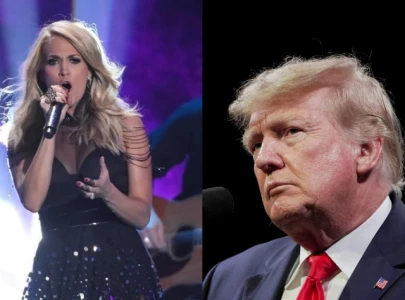







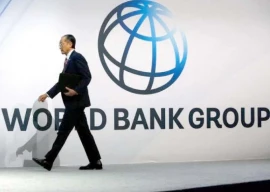




1736672726-0/tommyinnit-dream-(2)1736672726-0-270x192.webp)


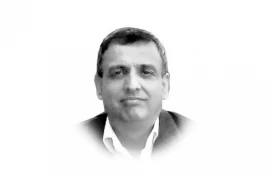
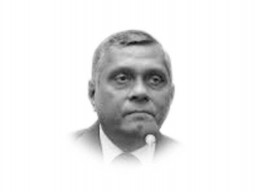



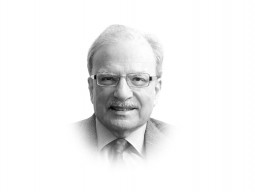
Opening of the Khokhrapar rail link would make Karachi/Qasim ports the nearest trade route for l
all of industrialised NW India. This has the potential for significant economic benefits to both
countries.
@Karib:
"It may suit him to keep both the words & throw away the meaning."
That is why there exists this maxim "Monh Pay Ram Ram, Aur Baghal Main Churri". This was true in the past, is true in the present, and will be true in future as well.
@Paul: Can you elaborate which Indian brand car India exports. To the best of my knowledge India has car assembly units of Japanese/European/Korean variants with local partners. Like Maruti is Suzuki, Tata is Honda as the principal company, All the International models are variants of the same development and designs with changes according to the Indian market. Not one genuine Indian car brand is in the market. Similarly Pakistan has car assembly units of the same brand with local partners. Here it is Indus motors for Toyota assembly, Pak Suzuki for obviously Suzuki cars, Honda Atlas for Honda car assembly and manufacturing(local deletion is 65-70 percent). Deewan motors for Hyundai so on and so forth. Also Pakistan now manufacturers close to 2 million bikes(2 wheelers) with many plants close to 100 percent local manufacturing, The vendor Industry, supplying parts to cars and bikes is alone worth more than 200 billion. Motorbikes are being exported to many African, Asian countries as well. All the households electric appliances like fridges, A.C's, deep freezers, microwave ovens, washing machines, cooking ranges, juicers, blenders etc are all made in Pakistan by local Pakistani companies with local brand names, search Dawlance, PEL, Waves, Super Asia, Sky flame, Sabro, etc. They are preferred over imported products due to a number of factors, specially Waves, Dawlance Super Asia. Also Haier, LG, Sharp, National, Panasonic has all local assembly plants in Pakistan.
@Paul: (India’s secularism is enshrined in it’s constitution and no force on earth can change that. ) This is a bombastic claim. Simply put, India has not declared any "State Religion", as yet. That's all. If that automatically implies "Secularism" then Nehru-Ambedkar were silent on that while preparing the Draft Constitution. May be they wanted future generations to choose a State Religion if they so desired. "Socialism" is also "enshrined" in Constitution. Does it mean Modi is heading a Socialist government? Indian Constitution did not have any such word to denote Secularism or Socialism till 1976. Indira Gandhi in desperation to win '77 election inserted these two words in the Preamble by an Amendment. Modi can remove "Secular Socialist" nomenclature/adjectives by an Amendment again if he so wills it, SC notwithstanding. He may not. It may suit him to keep both the words & throw away the meaning.
@Naheed Memon:
"India’s emergence as a super power is dependent on security and prosperity in the region"
LOL. Do you live in another galaxy? Don't you read the news? When did India become a super power? This revelation might sock even Indians themselves. My question is, can you really become a super power by importing a lot of military hardware while hosting 1/3 of the world's poorest of the poor, and the rest 2/3 earning below US$2 a day. India is a big bully no doubt, but we were not afraid of her even then when we didn't have the balancing power of nuclear weapons, nor are now when the bully has absolutely no strategic or tactical advantage over us.
Thank you Indian commentators here. We do not want any trade with India, even if might be beneficial for us (in imaginations only, and we are perfectly happy without it). It certainly is not beneficial at present and would never be in future (check trade balance between the two, 90% vs. 10%). Take back your MFN status and don't try to make it a some kind of favor to us. We didn't ask for it.
@N.Siddiqui: Pakistan GDP of USD 835 billion is based on PPP basis. India's GDP based on PPP basis is USD 7 trillion. Rest of South Asia, put together has a GDP of about 2 trillion on PPP basis. On real terms, India is at USD 2 trillion, Pakistan is at USD 300 billion.
@Naheed Memon - "India’s emergence as a super power is dependent on security and prosperity in the region as much as it depends on its ties with the its business alllies."
Most of the folks here in India are realistic & pragmatic and know that this becoming superpower talk is being used day in and day out by some analysts, business houses to pat themselves on their back or sell a dream to the masses.. Nobody is actively chasing it or working towards it...
So there goes down your argument, based on the premise that India is jittery at the prospect of losing out in the race of becoming a superpower and has to kiss and make up with Pakistan at any cost. ...
@Naheed Memon: I was thinking Trade not Security. India is not an insecure country, its goal is to become an economic Power house in keeping with the size of its population, not the biggest Military Power. No Indian will subscribe to a vision that Military Power will deliver it or take it where it wants to go. What other countries spend on their Defense, does not and should not matter to Indians. The Indian people through their representatives in Parliament will decide what the Defense budget should be, it is not a decision the Military can make. Within the constraints of the budget, how to allocate resources between the different arms of the Defense Forces like Army, Navy and Air Force --- will also be decided by Parliament and the Defense Minister. India will keep its Defense spending within 2% of its GDP and as the Economy grows gradually reduce it to 1%. We need the resources to be put to better use in infrastructure development besides educating and empowering the people. India's strength will remain its people and all policies made to ensure the dividends from demographics and human resources will be reaped. All the best, have a nice day !
@Paul: Partnerships between countries have contributed to growth and development historically in the last century. India's choice of partners and preferential relations with U S or China is not a good or bad thing. @Naheed_Memon
@Sri Varahadev: Trade and open borders will provide a stimulus to economic growth in the region. I allude to the correlation between this and security in the region. India's emergence as a super power is dependent on security and prosperity in the region as much as it depends on its ties with the its business alllies. @Naheed_Memon
@Feroz: I allude to security in the region that is as much of a necessity for India, in fact more so , as it is for Pakistan. The size of the economy only contributes to 50 percent of the possible benefit of free trade and open borders. @Naheed_Memon
"with Indians overlooking concerns regarding India’s secularism and the fate of their Muslim minority in favour of Modi’s economic vision"
Why do Muslims over the world think & behave as if the world owes them? No other (real) minority - Christian, Sikh, Jain, in India are whining about their fate being overlooked in favour of Modi's economic vision. Go get a life!!! Modi's economic vision encompasses everybody...
The writer well knows the source that has sabotaged improved Trade relations between India and Pakistan. Who has been the loser is also obvious because which of the two countries is a bigger market is known to all. Today the World is falling over one another to grab a share of the pie as India opens up to foreign investment, because the economic opportunities available elsewhere are limited. However it is really sad that those running Pakistan simply do not have the intellectual capital to even comprehend, leave aside avail of the opportunity. We need to understand that Trade with a country the size of Pakistan will not enhance Indian economic power in any significant way, however the potential for an economic transformation in Pakistan is mind boggling. Sadly, any nation that is anchored to any Ideology will discover in due course that it has stymied its own economic development and progress for non existent and illusory gains elsewhere.
@a_writer:
This is nothing but blackmail by Pakistan
@nana: Pakistan GDP is valued at 835 billion USD, much higher than that of Bangladesh at 496 billion USD, even though the economy is not exuberant and not developing due to a number of factors. The aid Pakistan gets is not even 1 percent of its GDP. Its private entrepreneurship which makes the country runs.
http://en.wikipedia.org/wiki/EconomyofPakistan
@Paul: Excellent fact based rebuttal to the author. Kudos.
http://tribune.com.pk/story/817147/the-political-economy-of-pakistan-india-trade/
Sri Varahadev
Re: “India does require better relations with Pakistan if it is to emerge as a South Asian superpower.”
India will either emerge or not emerge as a superpower sole based on the effectiveness or not of her efforts, irrespective of relations with Pakistan, just as the US emerged a superpower irrespective of relations with Germany, Japan or Russia, and just as Great Britain emerged a super power irrespective of relations with Spain and France. Above statement is balderdash that is not supported by historical precedent of emergence of super powers.
Pakistan can neither materially help nor hinder India. The dire economic straits resulting in Pakistan having to go to the IMF with cap in hand for a bailout and the puny GDP size relative to India, rule out help. Regards Pakistan’s hindrance capability, current blowback situation within Pakistan clearly shows that the price tag for hindering India is substantially higher for Pakistan herself.
The frequency with which the specious argument that Pakistan has some sort of veto power over India’s growth, development and emergence of a great power if not a super power; leads me to wonder if this is a product of some sort of mandatory briefing that Pakistan’s Punjabi dominated Military dispenses to would be journalists in Pakistan!
Re: “India does require better relations with Pakistan if it is to emerge as a South Asian superpower.”
India will either emerge or not emerge as a superpower sole based on the effectiveness or not of her efforts, irrespective of relations with Pakistan, just as the US emerged a superpower irrespective of relations with Germany, Japan or Russia, and just as Great Britain emerged a super power irrespective of relations with Spain and France. Above statement is balderdash that is not supported by historical precedent of emergence of super powers.
Pakistan can neither materially help nor hinder India. The dire economic straits resulting in Pakistan having to go to the IMF with cap in hand for a bailout and the puny GDP size relative to India, rule out help. Regards Pakistan’s hindrance capability, current blowback situation within Pakistan clearly shows that the price tag for hindering India is substantially higher for Pakistan herself.
The frequency with which the specious argument that Pakistan has some sort of veto power over India’s growth, development and emergence of a great power if not a super power; leads me to wonder if this is a product of some sort of mandatory briefing that Pakistan’s Punjabi dominated Military dispenses to would be journalists in Pakistan!
Pretty disjointed piece, don't you think? Tell me if the Pakistan- China FTA has disadvantaged Pakistan, what makes you think a "fortified" Sino-Pak "competing nexus" against India will work? Do you really need to quote Tinbergen to say that trading with neighboring countries has many advantages - such as saving freight charges, finding markets for small producers, joint ventures etc. Finally, a favorite of Pakistani analysts that India will never become a "South Asian superpower" unless it normalizes relations with that country. We may not be a superpower, but India's GDP is now over $2 trillion (85% of South Asia) and its trade is touching $1 trillion in spite of the "dog in the manger" attitude of Pakistan, a policy that may restrict India's trade relations with Central Asia but certainly has done little good to Pakistan.
This is the usual Pakistani wishful thinking seeking parity and legitimacy with India where none exists.
India has proposed trade with Pakistan but the latter has refused to move forward. Despite that, India is growing and is the powerhouse of South Asia. For India trade is a political strategy not an economic necessity.
Nawab Sharif /PML(N) - rightist government is in power. It continues to uphold a discriminatory constitution that denies non - muslims, including Ahmadiyas, equal rights. In addition, since 1974 when the current constitution was enacted by a "liberal" populist --ZAB, no government - right, left and military has dared to change the constitution to make all citizens equal. In contrast, secular in India means that every citizen is accepted as an equal under the laws and the constitution. Not even the BJP can change that - not that it has tried to.
Nations - most at least, conduct relations on the basis of mutual self interests. Sharing core values amplifies the political process. Indian and US Interests overlap. There is no security block in the offing. But Pakistan can make the emotional choice. It can choose to define new "strategic national interests" - align itself with anyone, and get mired in them like it has itself in Afghanistan. For Pakistan's economy to grow it has to have peace and stability. It cannot escape the basics. Only Pakistan can make that decision. So far it has not chosen to.FYI - India does NOT require better relations with Pakistan if it is to emerge as a South Asian superpower. It is already a superpower.
This piece would make a lot more sense if Pakistan's economy wasn't a basket case. The edifice is still standing due to aid and other dole-outs. All it needs is for the door to get kicked in. Garnishing growth and deficit numbers can only work for so long before the cumulative weight of fiscal imprudence catches up. The onus is entirely upon Pakistan.
The author has completely neglected to mention that Pakistan is a major Nuclear Weapons Power, not only in the Islamic world but in the whole world. This will ensure that we will continue to get aid from the developed countries.
Yet another arm chair analyst from Pakistan crying that India "needs" Pakistan for any future economic endeavors. While it will be "good" to have the business partnership, Pakistan's absence in the business network was never missed and will never be missed in foreseeable future by India. As much of emphasis is stressed upon the land based routes for business with central Asia, every strategists sitting between Islamabad and Arabian Sea thinks that Pakistan is in a economically viable option for India. Truth is that India would rather take it's chances with sea route to Iran and to central Asia. As current events in Tehran indicates, Iran's world isolation will be over soon and it will be back to talking business with rest of the world. Fact is and will remain that it will be more beneficial to Pakistan if it enters trade negotiations with India, if it's mullah brigade allows the show case democratic government to take some important business decisions.
An important matter raised. And glad to see Adam Smith getting an acknowledgement/reference in the context of modern day Indo-Pak trade :-)
Right at the outset, Ms.Memon states "Nevertheless, India does require better relations with Pakistan if it is to emerge as a South Asian superpower.". Why is it so? What is the logic behind this statement? It is not just Ms.Memon, a number of other Pakistani columnists have expressed similar sentiments which essentially boils down to - if Pakistan is not shown the due deference (it somehow feels entitles to) it will do everything it can, including hurting itself, to prevent India achieve any of its goals.
The trade route between Sindh-Gujarat/Rajasthan can become a pilot project for co-operation. Besides the economic reasons, a lot of Hindus and Muslims in Pakistan have relatives on the Indian side of the border. This could result in a better livelihood for the Tharparkaris who are the poorest in the country. Maybe there could be cordoned off area on the border which could serve as a wholesale market for goods, as a meeting point for relatives and so on. Im sure lots of Pakistani Muslims would want to visit Ajmer just like lots of Indian Hindus would want to visit Hinglaj (Hingol) which happens to be a Shakti Peeth.
Good logic laced with some wishful thinking.
Before trade comes trust. Indians do not trust pakistani intentions!